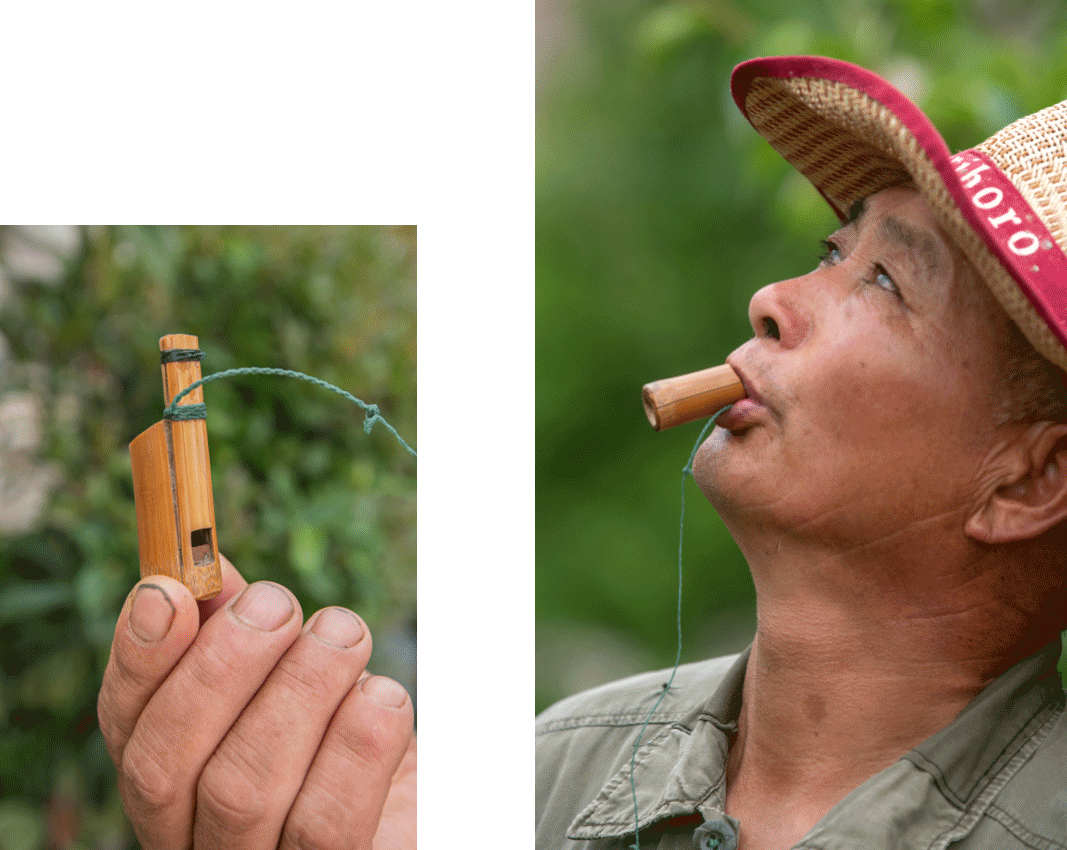
The Bird-Whistling Guardian of Shanghai’s First World Heritage Site
Bird conservationist Jin Weiguo has spent 26 years safeguarding the many species that inhabit the Chongming Dongtan Bird National Nature Reserve, which this summer became Shanghai’s first World Heritage Site.
The wetland reserve was among five sites added on July 26 to UNESCO’s World Heritage List, under protected “Migratory Bird Sanctuaries Along the Yellow Sea-Bohai Gulf of China.”
Jin, who is in his mid-60s, has made one of the biggest contributions to building the reserve. Armed with his trusty bamboo bird whistle, an item of Chinese intangible cultural heritage, he has helped capture tens of thousands of migratory birds for tagging, providing valuable data for researchers and conservation groups.
Ironically, Jin wasn’t working on the day of the UNESCO announcement and only learned of the news later through the media. “It’s good news that our application (to be listed) has finally been approved, as it means this place will be protected,” he says.

Hard times
Jin usually arrives at the mudflats of the Dongtan reserve just after dawn. To carry out his work, he carries with him a large net, rope, two bamboo poles, several decoy birds, and his whistle, which he can use to imitate the calls of more than 30 bird species.
He sets up the net with the bamboo poles, connects the rope, and places the decoys nearby before retreating a few dozen meters away. Holding the rope firmly, he rests on a foam block and stares into the sky. As soon as he spots a bird, he adeptly identifies it — either through sight or sound — and blows his whistle to imitate the species’ trademark call.
Jin says the migratory birds, thinking that the calls are from the decoys, begin to approach them. When they are close enough, Jin yanks the rope to spring his trap. His large net can catch up to 80 birds in one go.
Once researchers from the reserve have banded the captured birds with small tags to collect information on their migratory patterns, they are released back into the wild.
Jin, a native of Chongming Island to the north of Shanghai, has been doing this work since the Dongtan reserve was established in 1998. In the early days, as the area was less developed, he would usually stay on the wetland for weeks at a time, eating simple dishes cooked in a small pot. At night, it would be pitch dark. Conditions were really hard, he says.

A whistle away
Bamboo bird whistles have been used for centuries and are a tradition passed down through generations of bird catchers. Jin, an official inheritor of this intangible cultural heritage, began learning his craft from his father and grandfather at around 7 years old. In his youth, he would hunt birds to sell at the market or to savor at the family dinner table.
The decreasing number of wild birds and the growing concept of wildlife protection eventually put an end to this practice; in the same year that the Dongtan reserve was established, bird hunting was banned. To earn a living, Jin began working as a plasterer. But it wasn’t long before avian researchers reached out to ask him to put his bird catching skills to good use. His bamboo bird whistle would become a tool for science rather than for hunting.
After several years as a volunteer with the protection team, Jin was appointed as a bird warden in 2004. Now officially retired, he is once again providing his services on the mudflats as a volunteer. He says he will continue to work until he is too old to blow his whistle.
Jin laments that Dongtan has far fewer migratory birds now than when he was a child. But he says that, through his work, he has come to understand more about where the birds are coming from and going to. He often talks of the time he spotted a migratory bird wearing a Dongtan tag during a working trip to Australia, and he sometimes notices tags on captured birds from other reserves overseas. Every time this happens, it fills him with a sense of pride.
This year, Jin has been helping train three apprentices. “The art of bird whistling shouldn’t be abandoned,” he says, emphasizing that it’s the most effective method for catching birds.
Now at the end of his career, Jin has been rewarded with the knowledge that this precious bird reserve has been inscribed forever on UNESCO’s World Heritage List. He has laid a solid foundation for future generations to follow.


A version of this article originally appeared in The Paper. It has been translated and edited for brevity and clarity, and is republished here with permission.
Translator: Eunice Ouyang; contributions: Wang Juyi; editors: Xue Ni and Hao Qibao.
(Header image: A Daurian redstart at the Chongming Dongtan Bird National Nature Reserve. From the Dongtan Reserve)










